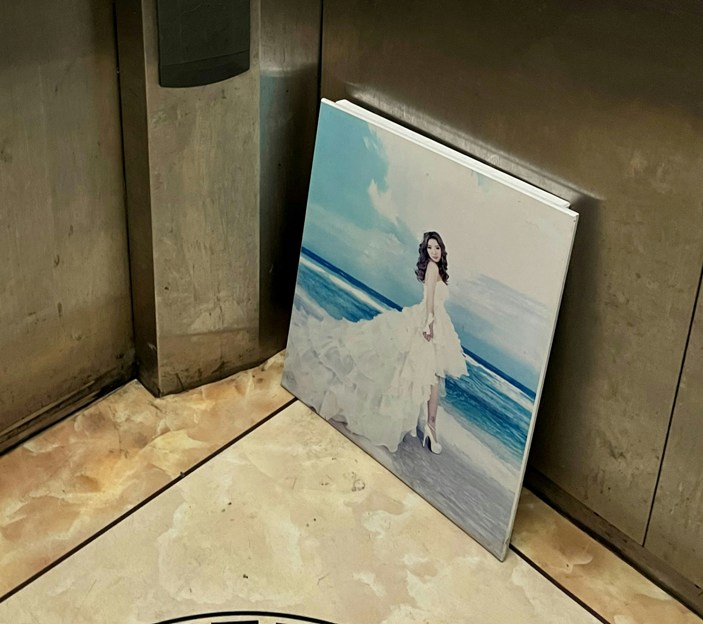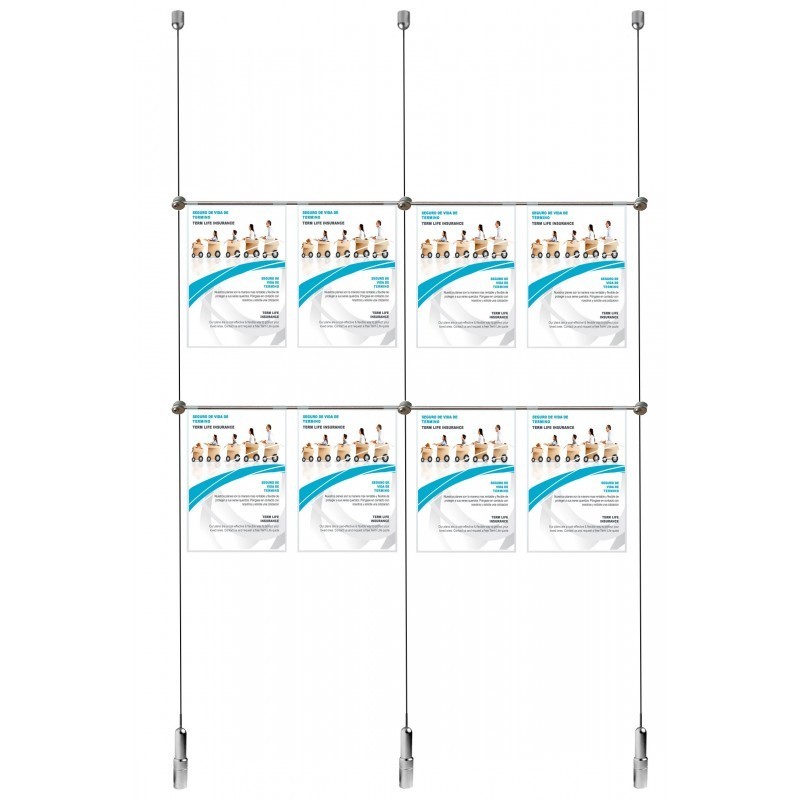This discreet and easy-to-use cable system is not just a display; it's a versatile tool to enhance merchandising,...
How to Use the Brass Cylinder Hook for Picture Hanging Wire System
Hanging a Gallery Wall in a Living Room
The Challenge: Sarah wants to create a gallery wall featuring a mix of her children's framed artwork (lighter, smaller frames) and two large, heavy vintage posters (wider and heavier). The wall is plaster, and she wants a clean look without visible wires.
The Solution: Using the Brass Cylinder Hooks with a Cable System.
Step 1: Planning and Gathering Materials
Sarah maps out her gallery arrangement on the floor. She identifies:
- Artwork A: A large poster, 80cm wide, 8 kg in weight.
- Artwork B: A second large poster, 70cm wide, 7.5 kg.
- Several small frames, each under 3 kg and 40cm wide.

She gathers her materials:
- For the heavy pieces: 2mm thick clear Pelon cable and multiple Brass Cylinder Hooks.
- For the light pieces: Some picture cord and hooks.
- For the wall: Appropriate wall anchors and screws for her plaster wall.
- A tape measure, pencil, level, and screwdriver.
Step 2: Installing the Wall Hardware
Sarah decides to install two horizontal runs of clear cable for the heavy pieces—one higher up and one lower—to accommodate her layout. She installs a heavy-duty screw and anchor at each end of the planned cable runs, leaving the screws protruding by about 5mm to loop the cable around.
Step 3: Setting Up the Cable
She takes the 2mm Pelon cable, loops it around the first screw, pulls it taut across to the second screw, loops it, and cuts it with extra length. She secures the ends with several tight crimps (using cable crimps/ferrules). She repeats this for the second lower cable. The cables are now strong, fixed lines on the wall.

Step 4: Preparing the Pictures
- For the large 8kg poster (80cm wide), she knows she needs two points of support. She attaches two D-rings to the back of the frame, one on the left and one on the right, about one-third of the way down from the top.
- For the 7.5kg poster (70cm wide), she does the same.
Step 5: Hanging and Adjusting the Pictures
- She takes two Brass Cylinder Hooks. For each hook, she loosens the thumb screw by hand, slides the hook onto the upper cable, and places them roughly where the D-rings will be.
- With a friend's help, she lifts the large 8kg poster and hangs the left D-ring on the left hook and the right D-ring on the right hook.
- The picture is up, but it's not level. Sarah simply loosens the thumb screws slightly. She slides one hook up and the other down until the picture is perfectly level. She tightens the thumb screws firmly by hand to lock them in place. No tools are needed for this adjustment.
- She repeats the process for the second large poster on the lower cable.
Step 6: Creating a Vertical Stack
Sarah has a few small, light frames she wants to hang above the large posters. For these, she simply slides additional Brass Cylinder Hooks onto the same cables above the already-hung pictures. She uses picture cord on the back of these small frames and hangs them from the new hooks. She adjusts their height individually until the spacing looks perfect.
Frequently Asked Questions (FAQ)
Q1: Is this hook really strong enough for 10 kg?
A: Yes, when used as directed. The hook is made from solid brass, which is a very strong alloy. The 10 kg rating is for the hook itself when properly attached to a secure cable or cord. The weakest point will always be your wall anchor, so ensure you use anchors and screws rated for the total weight.
Q2: Can I use these hooks directly on a wall?
A: No. The Brass Cylinder Hook is not designed to be screwed directly into the wall. It is a suspension device that must be hung from a supported cable, cord, or a track system that is already attached to the wall.
Q3: What is the difference between the 1.5mm steel cable and the 2mm Pelon cable?
A:
- Steel Cable: Very strong and durable, but can be more visible. Often coated in nylon (e.g., aircraft cable).
- Pelon Cable: Made from a clear, strong polymer like PET. The main advantage is that it is nearly invisible against the wall, creating a "floating" effect for your artwork.
Q4: Why do I need two hooks for wider pictures?
A: Using two hooks (one on the left, one on the right) prevents the picture from tilting or sagging in the middle. It distributes the weight evenly across the cable and provides lateral stability, keeping the picture flat against the wall and level. A single hook in the middle of a wide picture will often allow the top to lean away from the wall.
Q5: How do I actually attach the cable to the wall?
A: You need to install a fixed point at each end of the cable run. This is typically a:
- Screw and Anchor: A heavy-duty screw driven securely into a wall anchor. The cable is looped around the screw shank before the head is fully tightened.
- Wall Dog: A specialized screw with a perpendicular hole through the shank for threading the cable.
- Dedicated Hanging Track System: A professional gallery rail that is installed near the ceiling. The cables hang down from this track, offering maximum flexibility.
Q6: The thumb screw is tight but the hook still slips on my cable. What should I do?
A: Ensure you are tightening the thumb screw firmly by hand. If it continues to slip, check the compatibility of the cable thickness. A 2mm cable might be too thin for the grip of the screw if the hook is designed to also accommodate much thicker cords. Pushing the cable so it sits firmly in the corner of the hook's channel before tightening can also improve grip.
Q7: Can I use these on a sloped or vaulted ceiling?
A: Yes, that's a great advantage of cable systems. You can run the cable at any angle you need, and the hooks will still function the same way, allowing you to hang pictures level on a sloped surface.
Q8: Are these hooks suitable for outdoor use?
A: While brass has good corrosion resistance, constant exposure to the elements and moisture could eventually affect the mechanism or the cable. For permanent outdoor use, a fully stainless steel system would be more recommended.

















Leave a comment